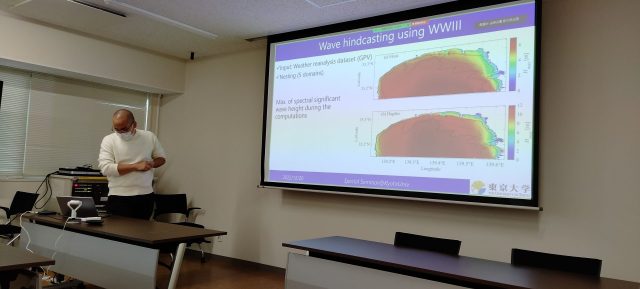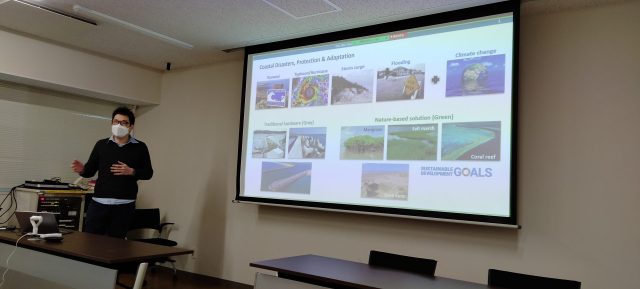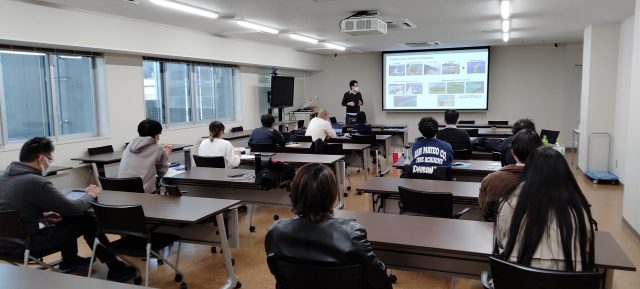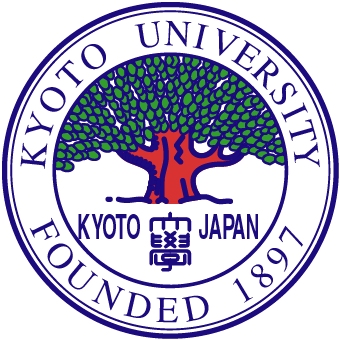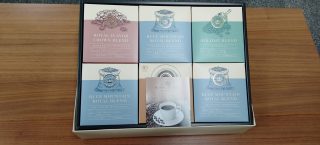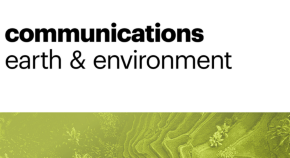Special seminar: Professor Karunarathna and Matsuba
Special seminar on NbS in coastal engineering
- Date
- December 20th
- 14:00-16:30 am (JST)
- Location
- S-519D
- Speaker 1
- Professor Harshinie Karunarathna (Swansea University, UK)
- Title
- Saltmarshes mitigate estuarine flooding
- Abstract
- Estuaries are sensitive ecological and socio-economic environments that face severe and frequent storm flooding under accelerating global climate change. In estuaries, saltmarshes are thought to mitigate rising storm impacts by dampening waves and surge locally, and by attenuating upstream surge propagation. However, it is uncertain how estuarine ecosystems holistically contribute towards flood mitigation. In this study we use numerical hydrodynamic models, capturing local and estuary-scale processes, to simulate storms of varying intensity in eight estuaries spanning a variety of contexts in Wales, UK. Our analyses show that saltmarshes strongly reduce impacts of flooding across all eight estuaries and particularly for the largest storm events, reducing average flood extents by 35% for 100-year storms, saving millions of pounds in flood-damage costs. Coastal protection services of saltmarsh vegetation emerge from both local wave attenuation and estuary-scale up-stream surge attenuation, with the latter process dominating: mean flood reductions are 17% in the sheltered top third of estuaries, compared to 8% near wave-exposed estuary mouths. Collectively, our results show that saltmarshes play a very important role in mitigating storm flooding in estuaries via multi-scale processes.
- Speaker 2
- Professor Yoshinao Matsuba (The University of Tokyo)
- Title
- Infragravity waves during storms
- Abstract
- Infragravity waves are long waves (<0.04 Hz in wave frequency) developing through nonlinear wave interactions among short waves in shallow water. They are known to become a dominant driver of coastal flooding and beach morphological change during stormy conditions. Recent numerical models (e.g., SWASH, XBeach) can predict the development of infragravity waves to some extent, but there is a huge uncertainty in their hydrodynamics during storms because we lack detailed observations in shallow water during such situations. In this talk, I will present about how infragravity waves evolve by interacting with short waves and coastal topography and how they intensify coastal damage based on observations and numerical modeling during typhoons. Infragravity waves exceeding 2 m in wave height not only caused significant water level change in shallow water by themselves, but also they intensified short waves by mitigating wave breaking dissipation during extreme typhoons. Future prospect to improve nearshore wave modeling will be also discussed based on ongoing projects.
- Speaker 3
- Professor Che-Wei Chang (Kyoto University)
- Title
- Progress of magrove study for coastal disaster risk reduction
- Abstract
- Mangroves, a major type of nature-based solution in the tropics and subtropics, were evidenced capable of protecting coastal regions. The typical species, Rhizophora with its complex root system, was found especially effective in reducing wave energy in extreme wave events. To investigate the impacts of mangrove roots on water waves at a finer scale, we conducted laboratory experiments using 3D-printed models that replicated the real geometry of natural mangroves. Applying the approach of direct force measurement, we proposed empirical formulas that can be used to parameterize the resistance induced by mangrove roots. We also discussed the impacts of mangrove root structures on fluid velocity and turbulence. In addition, wave attenuation by mangroves was investigated. The ongoing works and future research directions will be also introduced in this talk.
